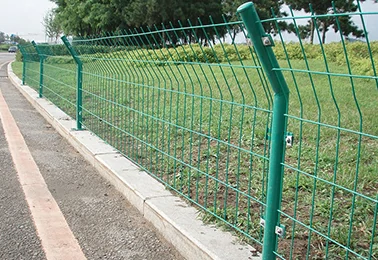 TEL:
+86-13102802206
TEL:
+86-13102802206
 Email:
fencenetting@china.com
Email:
fencenetting@china.com
 Language
Language
 TEL:
+86-13102802206
TEL:
+86-13102802206
 Email:
fencenetting@china.com
Email:
fencenetting@china.com
 Language
Language


The Versatility and Strength of Stainless Steel Strand
Stainless steel strand is a remarkable material that has gained widespread attention in various industries due to its unique properties and versatility. Composed mainly of steel alloyed with chromium, stainless steel exhibits exceptional resistance to corrosion, making it an excellent choice for applications where durability and strength are paramount.
One of the defining characteristics of stainless steel strand is its impressive tensile strength. This strength makes it suitable for heavy-duty applications, particularly in construction and engineering projects. For example, stainless steel strands are often used in the fabrication of cables for suspension bridges, where they provide the necessary support to withstand immense loads and environmental pressures. The incorporation of stainless steel strands in such structures not only ensures reliability but also extends the lifespan of the materials used.
Corrosion resistance is another crucial feature of stainless steel strand. Traditional steel can succumb to rust and degradation when exposed to moisture and harsh environments. In contrast, the chromium in stainless steel forms a passive layer of chromium oxide on the surface, which protects it from further oxidation. This property makes stainless steel strands ideal for marine applications, such as mooring lines, ship rigging, and underwater construction. Objects made with stainless steel strand can remain functional even in the most demanding marine conditions, significantly reducing maintenance costs and downtime due to corrosion-related failures.
In addition to its mechanical properties, stainless steel strand is also valued for its aesthetic appeal. The polished finish of stainless steel lends a modern and sleek appearance, making it a popular choice in architectural applications. Decorative railings, cable-stayed structures, and artistic installations often employ stainless steel strands to achieve a blend of functional strength and elegant design. The material’s ability to maintain its appearance over time, without the need for repainting or frequent upkeep, adds to its attractiveness in both commercial and residential projects.

Stainless steel strand is available in various diameters, lengths, and configurations, making it customizable for a wide range of applications. Manufacturers produce strands that can be twisted into cables, which are then used in various industries, including aerospace, oil and gas, and telecommunications. The flexibility in design means that engineers can tailor solutions to meet specific project requirements, while the reliability of stainless steel ensures that these strands will perform as expected.
Moreover, sustainability is becoming increasingly important in today’s world. Stainless steel is 100% recyclable, and its use in products contributes to a circular economy, where materials can be reused without loss of quality. This aspect is particularly significant as industries aim to minimize their environmental impact. The longevity and durability of stainless steel strands also mean that they require fewer replacements over time, further reducing waste.
As technology advances, the production processes for stainless steel strands continue to evolve, integrating improvements in manufacturing techniques and quality control. This evolution ensures that stainless steel products not only meet but exceed industry standards, making them safe and reliable for end-users.
In conclusion, stainless steel strand is a highly versatile and durable material suitable for a diverse range of applications, from construction to aesthetics. Its unique properties, including tensile strength and corrosion resistance, make it an ideal choice for engineers and designers alike. As industries seek sustainable and long-lasting materials, stainless steel strand keeps proving its worth, establishing itself as a fundamental component in the modern landscape of engineering and design. The continued innovation in its use promises a bright future for this valuable material, reaffirming its status as a staple in various industrial applications.